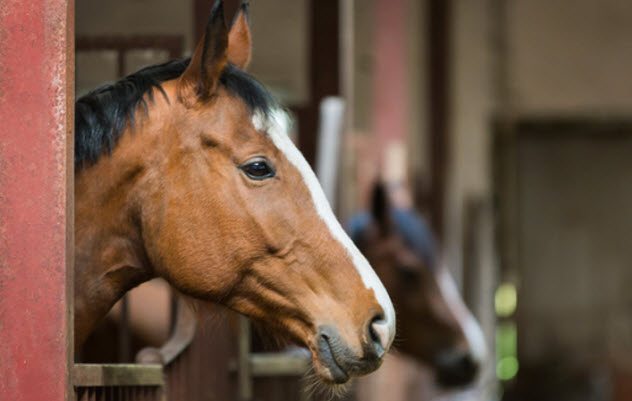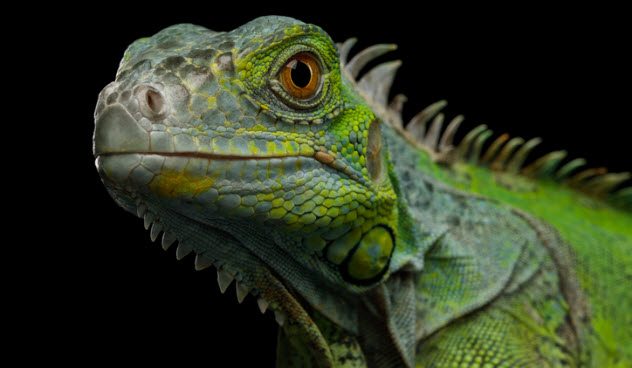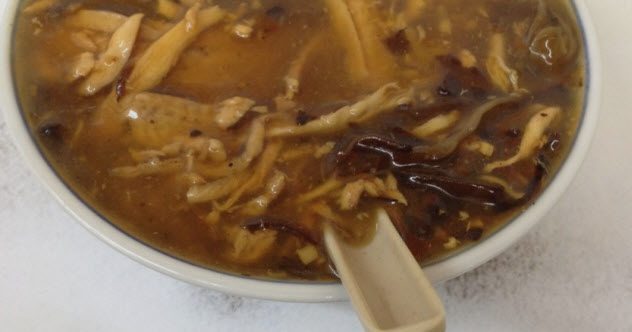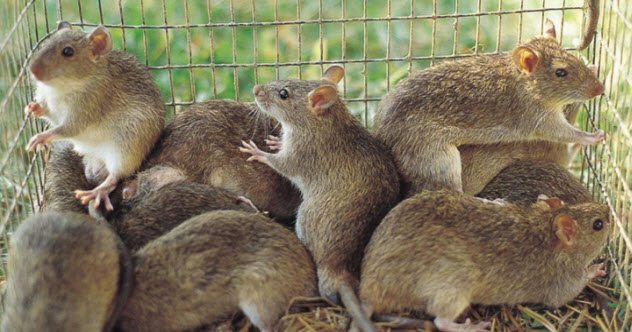Your answer is almost definitely “no.” Now, would you eat another animal of the same species as your pet? This time, your answer might be “no.” However, ask the citizens of some countries these same questions and you will probably hear “yes,” especially to the second question. Although some of us have become so accustomed to some animals as pets that we no longer consider them as food, other people have no qualms about eating these animals, even if they have a similar animal as a pet. Here are some countries whose citizens will eat your favorite pet without a second thought.
10 Dogs
Dogs may be man’s best friends but not to some citizens of Switzerland, Vietnam, Nigeria, South Korea, Indonesia, Greenland, the Philippines, and China, who consider the animals as just livestock. In Switzerland, it is illegal to buy and sell dog meat. But there is no law against people killing and eating their own dogs. Several tribes living around the Arctic and Antarctic will also readily munch down on their dogs when food is low. In Vietnam, dog meat is the go-to meat during ceremonies. Demand is so high that dogs are now being stolen from the streets and homes of neighboring Thailand and smuggled into Vietnam.[1] If there is one place not to be a dog, it is South Korea. In that country, up to 2.5 million dogs are slaughtered and eaten every year. Following South Korea is the Philippines, where over 290,000 dogs are killed for human consumption annually. Dog meat used to be legal in the Philippines until the 1998 Animal Welfare Act banned it. However, the dog meat industry simply moved underground and business continued as usual. These days, it is worth over $4 million a year. The Lychee and Dog Meat Festival (aka the Yulin Dog Meat Festival) marks the height of consumption in China. Over 10,000 dogs and cats are eaten during the 10-day annual festival held in Guangxi province.
9 Monkeys
Monkey meat is called “bushmeat” in the parts of West and Central Africa where it is eaten. In the Republic of the Congo, it is called likaku and is usually sold in restaurants and at roadside stands.[2] So many monkeys are being hunted to sate the appetites of monkey meat lovers that some species are already at the brink of extinction. It was believed that one subspecies, the Miss Waldron’s red colobus, had been hunted to extinction, but there may be a few still living in Africa. This subspecies is now considered to be “critically endangered.” Gorillas, bonobos, and chimpanzees are not safe from monkey meat hunters and consumers, either, as these animals are considered alternatives to monkeys. There are claims that fresh monkey brains are a delicacy in China and Malaysia. It is said that the head of the unfortunate monkey is split open and the brain is eaten straight from the skull. These claims have not been confirmed, but it could have happened in the past—and possibly still occurs today. However, we know that cooked monkey brains are eaten in countries in the Far East.
8 Cats
Cat meat is eaten in Vietnam, China, and Australia. Despite being illegal, it is considered a delicacy in Vietnam, where it is called “little tiger.” Cats destined to become little tigers are usually drowned in water before they are skinned, roasted, and seasoned. Thereafter, they are cut into pieces and downed with bottles of beer. The Vietnamese demand for cat meat is so high that the animals are now stolen from the homes of their owners in neighboring Thailand and Laos and smuggled into Vietnam. Cats in Vietnam are not spared, either. In fact, it is rare to find cats strolling along the streets of Hanoi where the owners have learned to lock these pets inside their homes lest they become little tigers. Vietnamese only started eating cats in the 20th century when a series of wars left them starving and forced them to eat whatever they could lay their hands on. This also included dogs, rats, and insects.[3] Thieves are also fueling the cat meat industry in China where over four million unfortunate kitties are eaten every year. One thief was caught with over 500 cats he had stolen from the homes of their owners. The man, identified only as Sun, was selling the animals for a mere $4.40 a piece. Many Chinese were concerned when the news of the theft appeared on the Internet, although some were angrier about the cats being stolen rather than eaten. Felines are also eaten in Australia. Feral cats that have been wreaking havoc on Australia’s wildlife are the ones targeted for cooking pots. Australians no longer want these animals hanging around. What better way to get rid of them than just eating them? Other feral animals like pigeons and camels are also on the menu.
7 Horses
Although most Americans frown at the idea of eating horse meat, it remains a delicacy in many countries, including neighboring Canada. In 2014, almost 67,000 horses were butchered for their meat in Canada, even though the bulk was shipped to the European Union, which considers horses as food-producing animals. In the Netherlands, horse meat is a key ingredient in making sandwiches. Looking south, over 128,000 horses are slaughtered in Mexico every year. Like Canada, the bulk of the meat is exported. But this time, it goes to several countries including Egypt, Hong Kong, Kazakhstan, Russia, Vietnam, and Japan. In Japan, horse meat is used in traditional dishes such as basashi. Interestingly, Mexicans are not totally fans of eating the product despite having a huge horse meat industry. However, it is normal for butchers to pass off this meat as beef. An investigation revealed that 10 percent of beef sold in five Mexican cities was actually horse meat.[4]
6 Lizards
For reptile lovers, your favorite pet is just another food in parts of Asia and South America. Fried gecko is a delicacy in Indonesia, where it is loved for its supposed medicinal properties. It is also popular in China, where it is believed to shrink tumors. Gecko is said to taste like something between chicken meat and fish. Iguanas are not spared from cooking pots in El Salvador, Mexico, and Puerto Rico. Lots of these lizards also roam the streets and forests of Puerto Rico, where they were first introduced as pets in the 1970s. Some got into the wild and, considering their rapid rate of reproduction, quickly surpassed humans in population. There are more iguanas than people in Puerto Rico today. So Puerto Ricans have decided to eat the iguanas to keep their population low. The meat is said to taste like chicken, just better.[5]
5 Snakes
The Chinese have been eating snake soup since the third century BC. The soup remained an exclusive treat for the rich until it became common throughout China in the 1700s. It is believed to cure arthritis, improve the skin, and promote blood circulation. The soup’s warmth is used to counter the winter cold, which is why it is often eaten then. These days, it is considered a delicacy in Hong Kong where it is called se gang. A typical snake soup contains as many as five different types of snakes. It is boiled with pork bone and chicken. Mushrooms, ginger, chrysanthemum leaves, and lemongrass are added for taste. The snake meat can also be fried or made into casseroles. The meat is said to look and taste like chicken except that it is a bit tougher. Hong Kong restaurants that serve snakes are called se wong (“snake king”). These eateries are slowly becoming a rarity in Hong Kong because the low wages paid in the industry are not enough to keep expert chefs and snake handlers committed to the preparation of the delicacy.[6]
4 Mice
Roasted mice are roadside delicacies in Zimbabwe and Malawi. In Zimbabwe, the rodents are caught with traps set in cornfields. The trapped mice are roasted and salted before being sold to commuters traveling to neighboring South Africa.[7] In Malawi, they are called mbewa or roasted field mice. There, they are also caught in fields but without traps. Instead, children disturb corn husks, forcing the mice hiding underneath to attempt an escape. The children kill the escaping mice with sticks. At other times, the children set the entrance to the mouse nests on fire and kill any mice trying to escape. The animals are roasted, salted, and peppered. Then they are eaten whole, complete with the bones and everything else within.
3 Rats
Rats are a delicacy among members of the Adi tribe in India. Any kind will do—from regular house rats to those found in the forests. The Adi people even have an annual festival called Unying-Aran, which is celebrated with rat dishes. The animals can be roasted or made into bule-bulak oying stew that contains the rat’s entrails, tail, legs, and fetus. Rats are also eaten among the Dalit caste of India. The members of this caste, one of the country’s poorest, are even called “rat eaters” because they often cultivate the farms of a richer caste in exchange for killing any rats found there. The rodents are usually smoked and eaten whole. They are said to taste like quail or chicken. Rats are also eaten in Cambodia, Laos, Myanmar, the Philippines, Indonesia, Thailand, Ghana, China, Vietnam, Nigeria, and Cameroon. The preferred breeds are the African giant rat in Nigeria and the equally big cane rat in Cameroon. The cane rat is the size of a small dog and is more expensive than chicken. It is said to taste like pork but is more tender.[8]
2 Turtles
Turtle soup was popular in the US in the 1860s. It was even served at the second inauguration of President Abraham Lincoln in 1865. President William Howard Taft loved it so much that he selected the White House chef based on his ability to cook the soup. In the South, wealthy patrons hosted turtle soup parties called “turtle frolics.” The popularity of turtle soup made it so expensive that mock turtle soup was introduced. It was similar to the regular variety except that the turtle was replaced with the head of a calf. Mock turtle soup, which was served at Lincoln’s first inauguration, was also costly, though not as much as real turtle soup.[9] Both soups had almost completely disappeared in the US by the 1960s. Mock turtle soup is still sold in Cincinnati today, but it is made with ground beef. In China, turtle soup is believed to improve blood circulation, enhance kidney function, stop menstrual pains, and prolong life. As weird as it sounds, a good number of turtles used for Chinese turtle soup come from the US. In Arkansas, about 600,000 of these animals were killed for human consumption between 2004 and 2006. Over 106,000 kilograms (235,000 lb) of turtles were also harvested in Iowa in 2007. This is creating a problem in the US because turtles are being harvested faster than they are reproducing. Protected species like the alligator snapping turtle (Macrochelys temmickii) are not spared because they are being mistaken for their unprotected look-alike, the common snapping turtle (Chelydra serpentina).
1 Rabbits
Rabbits are the third most common mammals kept as pets in the United States. They used to double as livestock before and during World War II, but this stopped with the advent of large-scale farming. Little wonder that their reintroduction as food has generated controversy in the US. However, rabbits are just another meat in countries such as Cyprus, Italy, Malta, France, and China. In fact, China, the world’s largest supplier, produced 690,000 tons of rabbit meat in 2010. Of that, 10,000 tons were exported to several countries, especially Belgium, Germany, and the US. Rabbit meat is also common in the European Union, where about 326 million of the animals are slaughtered every year. These days, rabbit meat is promoted as a leaner alternative to chicken and beef in the US. But Americans are divided over whether they want their rabbits to double as livestock or just remain pets.[10]
























